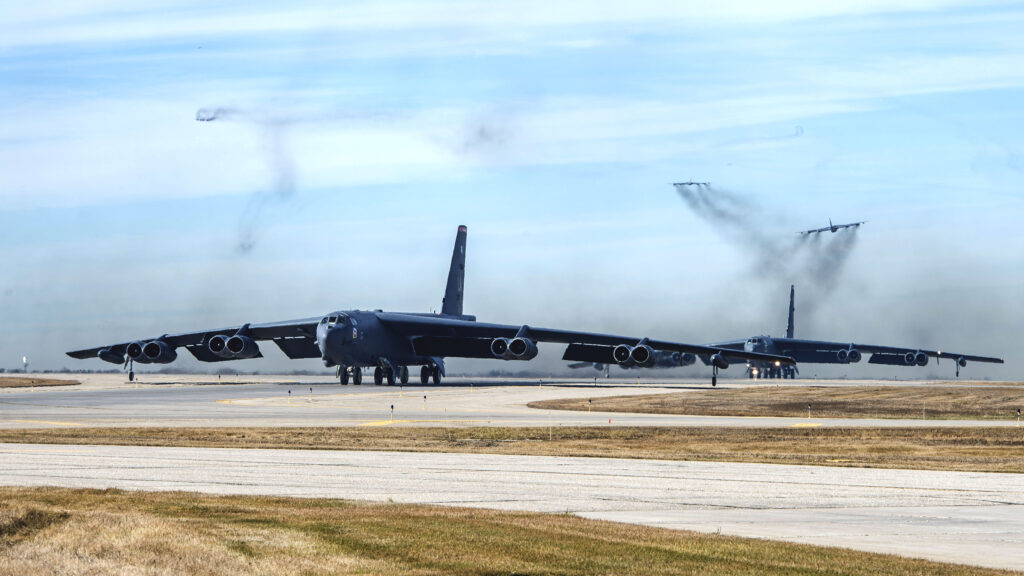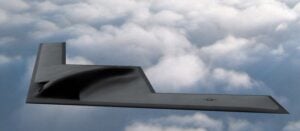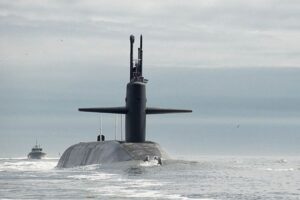CBO’s Nuclear Weapons Cost Estimate Is Way Too High ; Hint — Bombers
Posted on

Todd Harrison is one of the best defense budget folks around. Like many budget weenies (that’s the technical term) he really cares about how people come up with cost estimates because the underlying assumptions for them can lead in radically different directions. One example is the recent estimate on how much the next generation of nuclear weapons will cost by the relentlessly nonpartisan Congressional Budget Office. This estimate differed by an earlier report by an impressive $800 million. Why, and what does it all mean? Read on! The Editor.
The Congressional Budget Office (CBO) estimates the total cost to build America’s new nuclear forces will be $1.2 trillion over the next 30 years, adding another number to a cluttered and confusing set of estimates already circulated by the Department of Defense (DoD), independent think tanks, and CBO itself.
In particular, CBO published a report earlier this year estimating that nuclear forces would cost $400 billion over the next 10 years. What is not immediately obvious is that CBO used different methodologies in these two reports, and the differences have a significant impact on the results and how they should be interpreted.
The first and most obvious difference is the time period of each estimate. The latest CBO estimate of $1.2 trillion covers a 30-year period — 2017 to 2046. CBO’s estimate from earlier this year only covered 10 years. Since the new estimate covers a period that is three times longer, on the surface it appears to make sense that the costs would be three times higher. But the cost estimates also differ in how they account for inflation. The CBO estimate from earlier this year is in then-year dollars, meaning inflation is included. In contrast, the latest CBO estimate is in constant 2017 dollars, which means inflation is removed from the costs. If inflation was included in the new estimate, the costs would be higher.

B-21 Raider artist rendering
The third difference is perhaps the most important to understand. The new CBO estimate uses the full costs of dual-use systems, specifically bombers that have both nuclear and non-nuclear missions (the B-52s and B-2s already in operation and the B-21s currently in development). It counts the full costs of operation, maintenance, and personnel to support the existing aircraft and all of the research, development, test, and evaluation (RDT&E) and procurement costs of the B-21. Previous CBO estimates included only 25 percent of the costs for B-52s and B-21s and 100 percent of the costs for the B-2s. Including the full costs of all nuclear-capable bombers in the latest estimate makes the costs of the airborne leg of the triad higher than CBO’s previous methodology.
While I commend CBO for its thorough and careful analysis and for clearly stating its assumptions, I do not agree with its decision to include 100 percent of the costs of these dual-use systems. My reasoning is straightforward: bombers are primarily used for non-nuclear missions, and the vast majority of their costs are not due to the nuclear mission. If the United States had no nuclear weapons, it would still need to operate, maintain, and modernize its fleet of bombers.

Ohio-class ballistic missile submarine USS Tennessee
This is not true for the other legs of the triad because sub-launched ballistic missiles (and the submarines that house them) and ground-based ICBMs only have a nuclear mission, so it is appropriate to include their full costs. But using the full costs of the bombers fundamentally changes the scope of CBO’s estimate to extend beyond just nuclear forces.
The inconsistencies this creates are evident in CBO’s own analysis. One of the options the report considers is eliminating the airborne leg of the nuclear triad. In calculating the savings from this option, however, CBO does not count all of the bomber-related costs as savings even though the option completely eliminates this leg of the triad. Instead, it concludes that “elimination of the nuclear mission would allow DoD to decrease production of B-21 bombers from the planned 100 to 80.” In other words, it only counts 20 percent of the cost of the B-21 as savings.
That is a tacit admission that the other 80 percent of its costs are not nuclear-related and therefore should have never been included in the overall $1.2 trillion estimate. It is also notable that CBO treats dual-use tactical fighters differently than bombers. In its latest estimate, as well as in previous estimates, CBO only includes the fraction of the costs of nuclear-capable tactical fighters that is attributable to the nuclear mission. Indeed, it would be ridiculous to count the full costs of all F-16s, F-15Es, and F-35As as nuclear costs. It does not make sense to count the full costs of bombers as nuclear costs for the same reason.
The question then becomes, how much of the bombers’ costs should be allocated to the nuclear mission? This is a matter of analytical judgement similar to the assumptions CBO already makes regarding the fraction of costs it uses for nuclear-capable tactical fighters. It is hard to know precisely how much of the bombers’ costs are due to nuclear-related requirements, but some guides already exist. In its written response to questions from Congress earlier this year about nuclear modernization costs, DoD provided a footnote with its estimate of the B-21’s costs that said, “These amounts represent the nuclear-related costs for the B–21 program which are estimated at 5%.” Similarly, the share of bomber operation and sustainment costs due to the nuclear mission can be estimated by the fraction of the bomber force on nuclear alert at any given time. CBO has previously assumed that 25 percent of the costs for existing B-52s (and future B-21s) is due to the nuclear mission based, in part, on the fact that about 25 percent of B-52s are on nuclear alert at any given time.
Regardless of the specific percentage one decides to use, CBO should not include the full costs of dual-use systems in the overall costs of U.S. nuclear forces. It needlessly overstates the costs due to nuclear forces and can lead to misperceptions about how much can be saved by eliminating certain parts of the nuclear triad. While nuclear-capable bombers are the dual-use systems that affect overall costs the most, there are other dual-use systems that have the same issue. For example, CBO includes the full costs of missile warning satellites and protected satellite communications systems in its estimates despite the fact that these systems are also used for many non-nuclear missions.
Many more people will hear the $1.2 trillion figure than will read the report and understand these nuances. That’s why it is important to make assumptions in the analysis that enhance the public debate rather than complicate it.
Subscribe to our newsletter
Promotions, new products and sales. Directly to your inbox.
